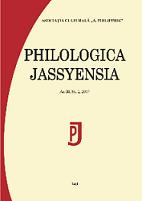Die sathmarschwäbischen Dialekte und ihre Sprachträger
The Sathmar-Swabian Dialects and Their Speakers
Author(s): Hans GehlSubject(s): Language and Literature Studies
Published by: Editura Tracus Arte
Keywords: Upper-Swabian dialects; language; culture
Summary/Abstract: During the XVIII century, Austrian settlement policy brought Upper-Swabians and Alemans to several communities of Swabian Turkey and the Batschka, but primarily to the Sathmar Comitat. Upper-Swabian dialects are spoken here, exceptions being zipserisch (bairisch) and alemannisch (in Kriegsdorf / Hodod). The Sathmar Swabians lacked spiritual leadership, and through the efforts of their schools and the Catholic Church they were almost completely magyarized in the XIX century. After the turning point of 1989 the rights of the nationalities in Romania were restored. At the 1992 census, 14 350 more inhabitants claimed German nationality than at the 1977 census. A large majority joined the Democratic Forum of the Germans, in the hope of gaining an advantage. German classes were also reintroduced in primary schools and middle schools (Gymnasiums) in Sathmar and Großkarol, although standard German replaced the lost Swabian dialect. The large wave of emigration of Romania-Germans to Germany in 1990 also decimated the remaining Sathmar Swabians. Small groups remained in a few villages, but Swabian is hardly spoken. The extensive assimilation into Hungarian is today counteracted in the Sathmar region by the Romanian official language, and partially by standard German. Within the group of Sathmar Swabians that emigrated to Germany, an integration of the older people and an assimilation of the younger generation can be anticipated, especially in Southern Germany. Great difficulties are experienced by the magyarized Swabians, who have to learn German as a foreign language. An advantage in this effort is their knowledge of the dialect and their relationship with German culture, which facilitate linguistic integration. The promotion of the German language and culture in the south-east European areas of settlement could support the incipient process of dissimilation in the linguistic usage of the Sathmar Swabians, but it is nevertheless likely that in the long run the Swabian dialect will not be used, but will rather be replaced by standard German. Noteworthy are the international events and numerous future-oriented activities in the region, especially with regard to Romania joining the European Union, in January 2007. Such events could – despite the massive emigration of Sathmar Swabians to Germany – increase confidence in the fate of the Sathmar Swabians and the continuing existence of the German language and culture in north-west Romania – and even in the other adjacent countries on the upper reaches of the Theiss (Hungary, Slovakia, und Ukraine).
Journal: Philologica Jassyensia
- Issue Year: II/2006
- Issue No: 2 (03)
- Page Range: 189-198
- Page Count: 10
- Language: German

